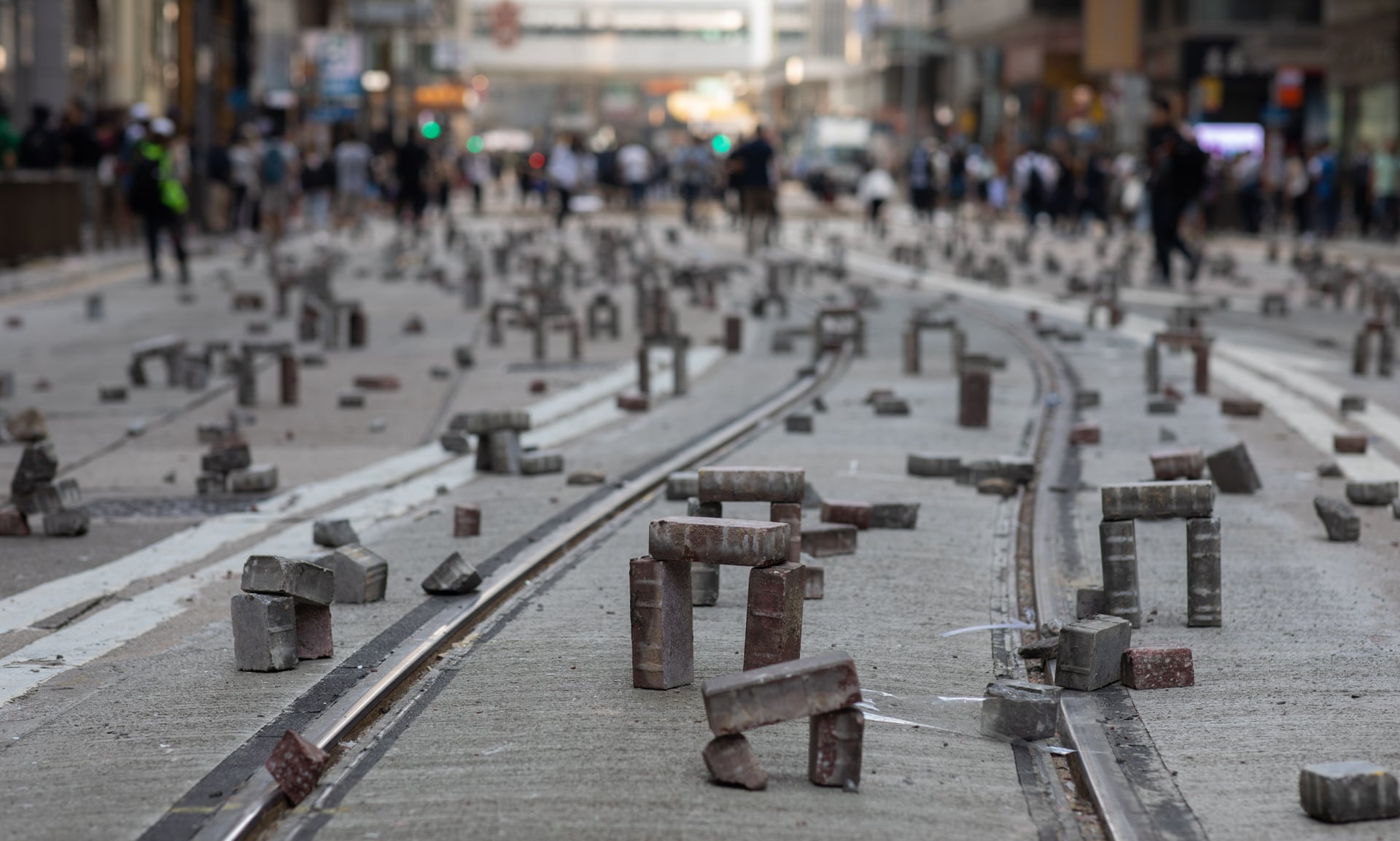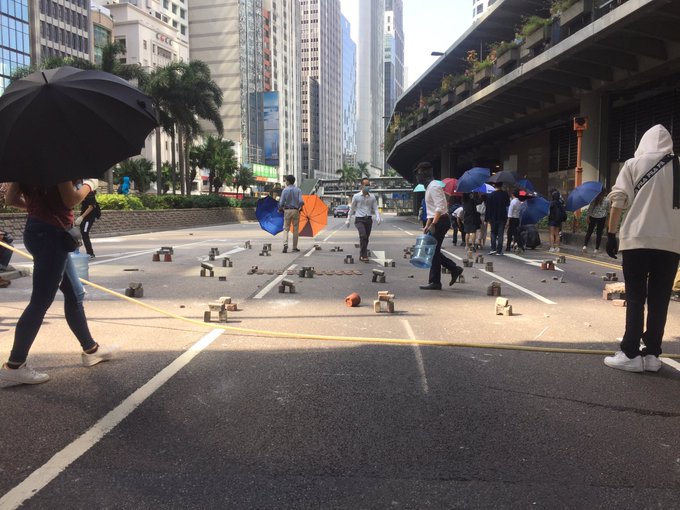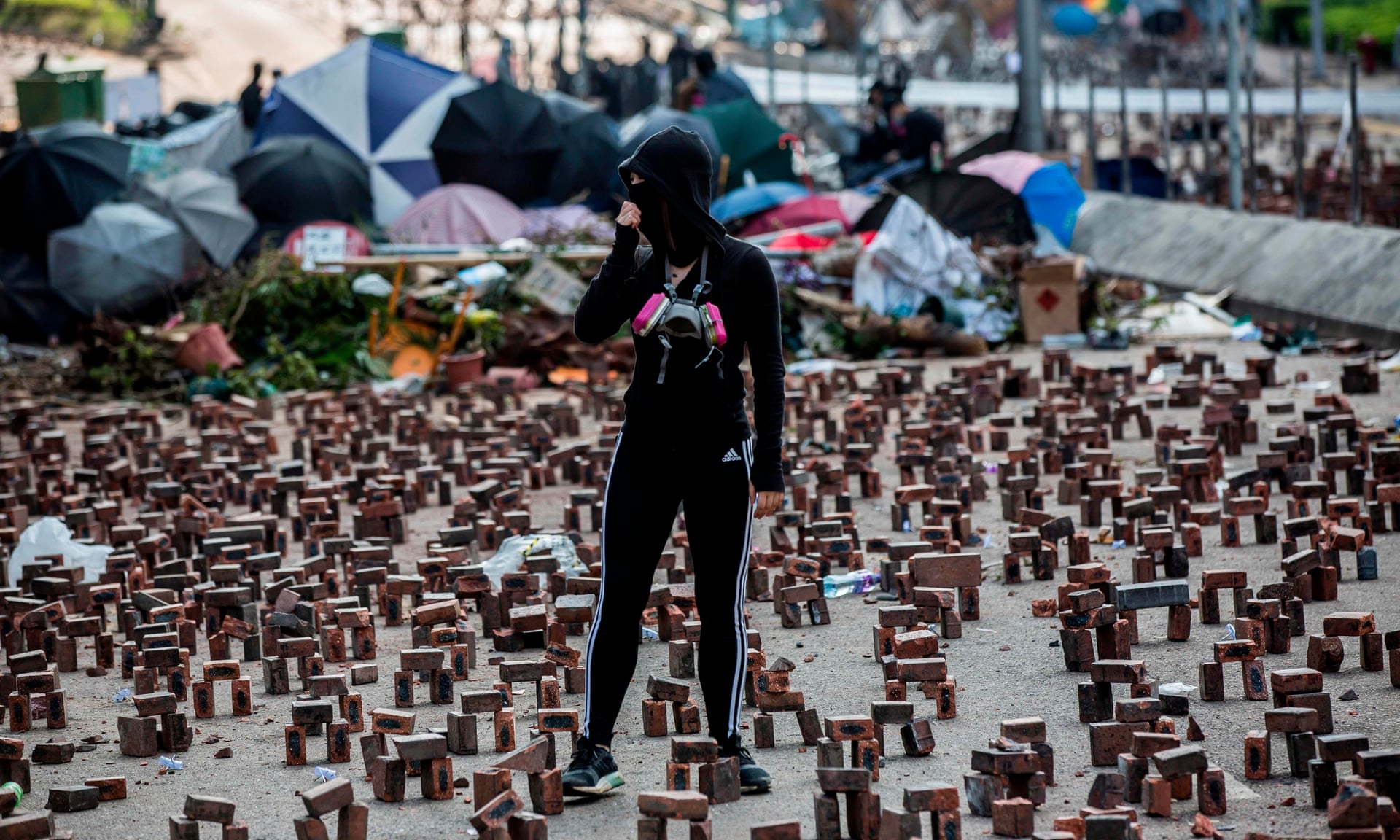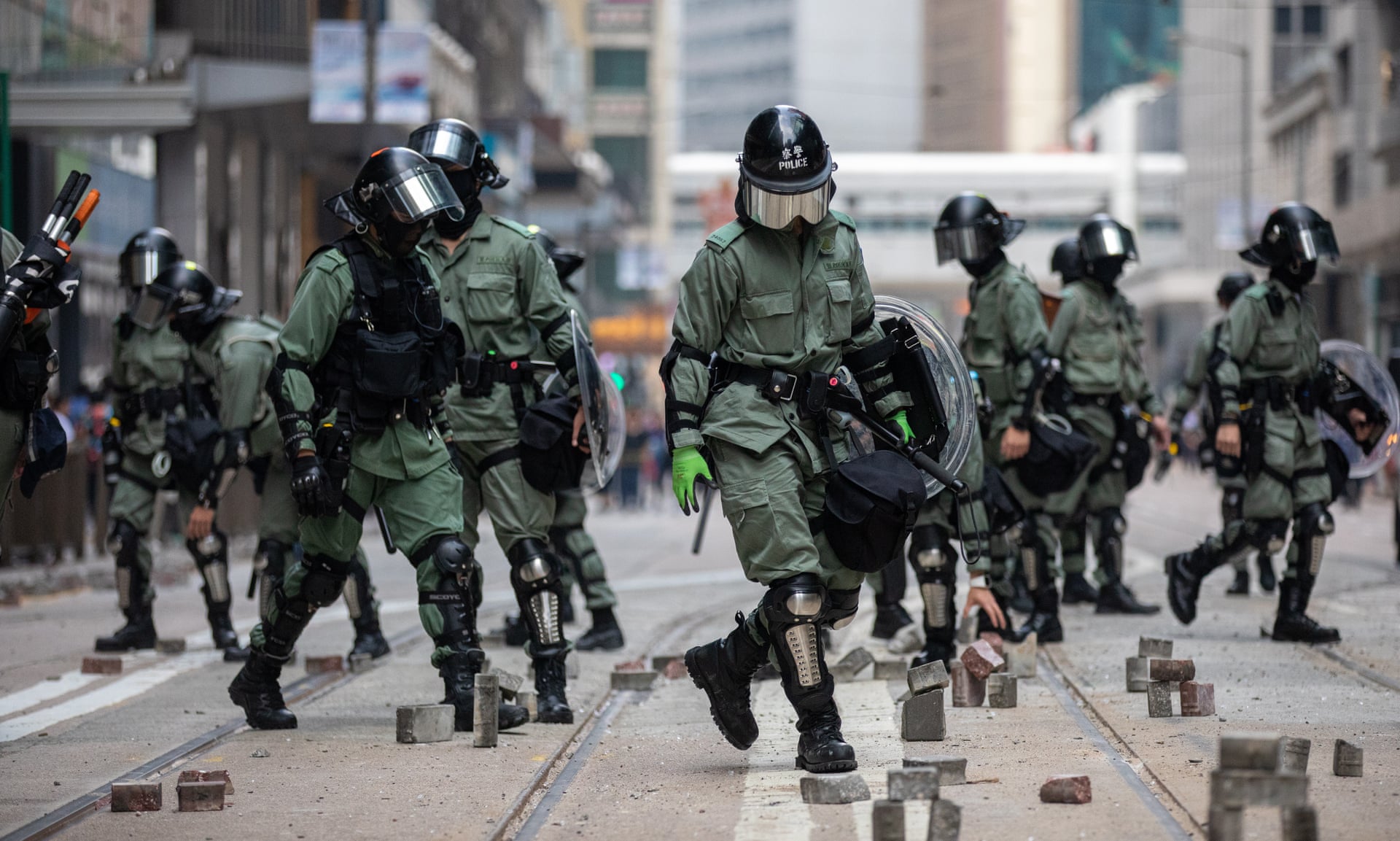Demonstrators devise tactic that slows the progress of charging police
By Verna Yu in Hong Kong Bricks stacked by pro-democracy protesters littler in a street during a flash mob in Central district.
Bricks stacked by pro-democracy protesters littler in a street during a flash mob in Central district.Hong Kong protesters have alighted on a new way to counter the police, as the five-month old anti-government resistance grinds on and their tactics evolve further.
The latest strategy being deployed across the city involves protesters stacking bricks that resemble mini-temples across thoroughfares to function as roadblocks.
Locally dubbed “brick battlegrounds” or “mini-Stonehenges”, they have been hailed by many supporters as creative installations to deter the advance of riot police and stop cars from driving over thoroughfares.
It is the latest tactic adopted by protesters in the five-month anti-government movement which has seen metal and plastic roadside barriers used as make-shift barricades, umbrellas and cling film used to shield against tear gas and pepper spray, foam swimming boards and cupboard doors used as shields against rubber bullets and sponge rounds, and sporting goods such as bows and arrows used as weapons.
Demonstrators were setting up the structures on Friday during a lunchtime rally in the central business district.
They could be seen outside the entrances of Chinese University of Hong Kong, one of the focal points of the protests.
“We are putting them everywhere,” a protester said.

Lily Kuo
✔@lilkuo
Replying to @lilkuo
These mini stonehenge road blocks being set up. A protester setting them up says they are to slow down water cannons and police vehicles. When hit by a wheel, the block on top falls and helps buttress the other two.
12
6:39 AM - Nov 15, 2019

Lily Kuo
✔@lilkuo
Replying to @lilkuo
These mini stonehenge road blocks being set up. A protester setting them up says they are to slow down water cannons and police vehicles. When hit by a wheel, the block on top falls and helps buttress the other two.

12
6:39 AM - Nov 15, 2019
Demonstrators said that the three-part structures help slow down police vehicles -- water cannons or armoured cars.
When struck by a wheel, the block on top falls away from the wheel and behind the two remaining bricks, acting as a buttress.
Conflict between police and protesters escalated this week after a police officer shot a 21-year-old student in the stomach as demonstrators attempted to disrupt the Monday morning rush hour.
A citywide strike and widespread traffic disruption this week was called for by protesters after the death of Chow Tsz-lok, a 22-year-old student who died last Friday from brain damage following a fall during protests.
Conflict between police and protesters escalated this week after a police officer shot a 21-year-old student in the stomach as demonstrators attempted to disrupt the Monday morning rush hour.
A citywide strike and widespread traffic disruption this week was called for by protesters after the death of Chow Tsz-lok, a 22-year-old student who died last Friday from brain damage following a fall during protests.
Aprotester stands amongst bricks placed on a barricaded street outside The Hong Kong Polytechnic University
Many thoroughfares outside universities and in the financial hub of Central have been blocked by the “brick battlegrounds” – some overlaid with long bamboo poles used for building scaffolding locally – since Monday.
The tactic has successfully forced traffic to grind to a halt and bus routes to divert this week.
The tactic has successfully forced traffic to grind to a halt and bus routes to divert this week.
Protesters also dropped bricks onto main roads or threw burning objects onto railway tracks in an attempt to paralyse Hong Kong’s normally efficient public transport.
Police entered several universities and fired teargas for the first time this week in what they said were "necessary" actions to stop students from engaging in "dangerous" action.
Riot police clear a street with bricks left by pro-democracy protesters scattered on the pavement
“Bricks are stacked up and scattered across the streets to make it difficult for vehicles to drive over – and it’s much harder to clear than ordinary roadblocks made with traffic barriers,” one protester told the Guardian.
“The bricks are great for turning the streets into battlegrounds and so easy to pick up. Good for slowing down the riot police when they come charging too,” said a post on social media.
In some places, bricks are even fixed onto the ground with wet cement to make it impossible for cars to drive over without damaging tyres, said another protester.
“Perhaps one day we will be able to call those our Arcs of Triumph,” said a post on the Reddit website.


Aucun commentaire:
Enregistrer un commentaire